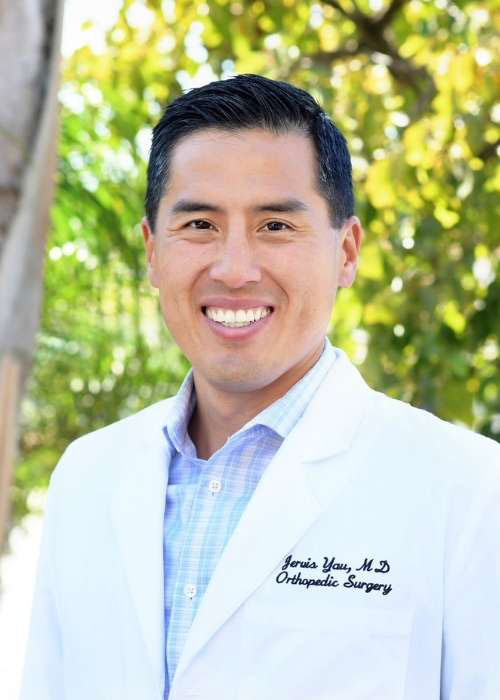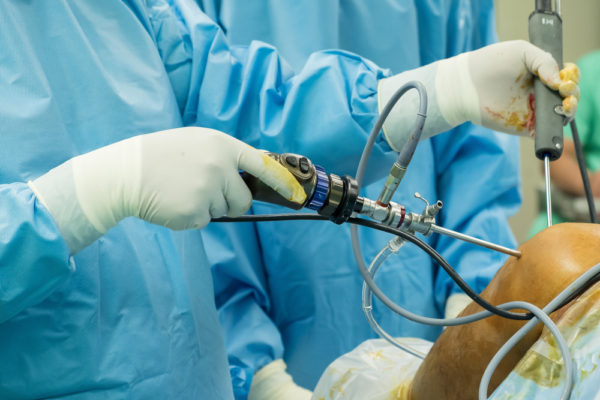Shoulder Dislocation/ Stabilization Surgeon

Are you an athlete who participates in powerful, repetitive overhead motions? If so, you are at an increased risk of a shoulder dislocation and shoulder instability. In some cases, shoulder stability surgery may fail and revision shoulder stabilization surgery is required. Revision shoulder stabilization surgeon, Dr. Jervis Yau specializes in surgical techniques to alleviate recurrent symptoms and to return patients in Santa Barbara to an active lifestyle. Contact Dr. Yau’s team today!
An Overview of Shoulder Dislocation Treatment
A shoulder dislocation occurs when the head of the humerus (ball) becomes pulled apart from the glenoid of the scapula (socket). Dr. Jervis Yau, orthopedic shoulder surgeon, is available to treat patients in the Santa Barbara, Goleta, Santa Maria and Ventura, California area who have experienced a dislocated shoulder. The overall goal of a shoulder dislocation treatment is to place the ball back into the socket and return stability to the joint. If the dislocation causes extensive joint damage, a shoulder stabilization surgery may be necessary to restore stability to the joint.
The shoulder joint is classified as having the greatest range of motion of any joint in the body. With this great mobility, comes the risk of injuring leading to shoulder instability. The shoulder joint is stabilized by soft tissue restraints, including ligaments, tendons and cartilage. Working together, these structures help keep the joint in its proper position during motion. When a shoulder dislocation occurs, the soft tissues tear as the humeral head separates from the glenoid.
It is crucial to reduce the dislocated joint in a timely fashion. Often after dislocations, the humeral head has to be manually manipulated back into the glenoid by a trained professional. Once the joint is reduced in the socket, Dr. Yau will perform a physical examination and review diagnostic tests. X-rays will be used to assess for bone damage while an MRI scan will detect the extent of soft tissue injury to the shoulder.
What is Shoulder Stabilization Surgery?
A shoulder arthroscopy stabilization surgery may be recommended by Dr. Yau if a patient has recurrent instability or extensive damage to the stabilizing structures of the shoulder. During the minimally invasive procedure, Dr. Yau will carefully examine and confirm the extent of damage. He will place anchors into the glenoid that contains strong sutures, which are used to repair the torn capsule, ligaments and labrum.
Occasionally, open shoulder stabilization surgeries are needed if patients experience chronic instability after failed arthroscopic repair, excessive bone loss or a missed dislocation where the joint cannot be manually reduced.

Recovery and Rehabilitation Following Arthroscopic Shoulder Stabilization Surgery
After surgical stabilization, patients will be required to wear a sling for approximately six weeks in order to protect the repaired shoulder. Physical therapy will typically be delayed until 3-6 weeks after surgery depending on how stiff the patients become. The physical therapy rehabilitation program will be focused on restoring motion and strength in a protected fashion. It is critical that patients adhere to the postoperative rehabilitation program to decrease the chance of recurrent instability.
To determine if arthroscopic shoulder stabilization surgery is the correct shoulder dislocation treatment for you, please contact the Santa Barbara, Goleta, Santa Maria and Ventura, California orthopedic practice of shoulder surgeon Dr. Jervis Yau.
Shoulder Dislocation FAQ
1. How long does it take a shoulder dislocation to heal?
Depending on factors such as severity of injury, patient’s age and whether this is the first dislocation, healing time could be 6 weeks or more. Once the dislocation is diagnosed, the doctor will likely prescribe ice packs to control swelling and several weeks of immobilization. He or she may perform a reduction — use a technique to move the shoulder back into its socket. If the shoulder continues to dislocate, surgery may be recommend.
2. How to prevent, treat, fix or stop a shoulder dislocation
Prevention: Try to stay in good physical shape. That means strengthening the back muscles, the neck, wrist, arm and of course, shoulder. Perform stretching and range-of-motion exercises, particularly after exercising, when the muscles are warmed up. Do not lift or carry objects that are too heavy. Repeated arm movements can injure the tendons or bursa (a lubricated cushion located at friction points between bone and surrounding soft tissue). Alternate arms when doing repetitive activities such as gardening or cooking. If you’re doing activities that involve raising your arms to the side or overhead (like painting) for long periods of time, take frequent breaks.
Surgery: Injury extent can be confirmed by an MRI and, if bone loss may be suspected, a CT scan. In situations where too much damage has occurred, the only way to return shoulder stability and range of motion is shoulder stabilization surgery. If there is a labral tear without bone loss, orthopedic surgeon Dr. Jervis Yau will perform arthroscopic shoulder stabilization surgery.